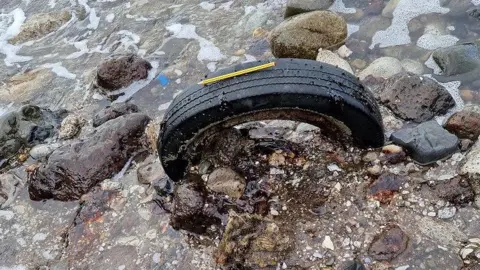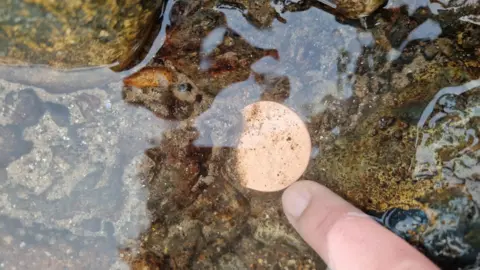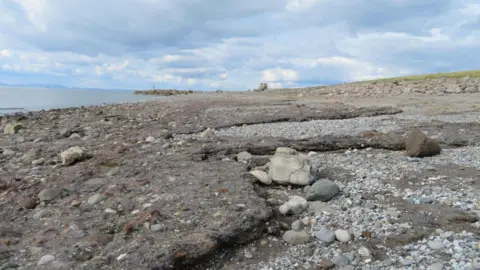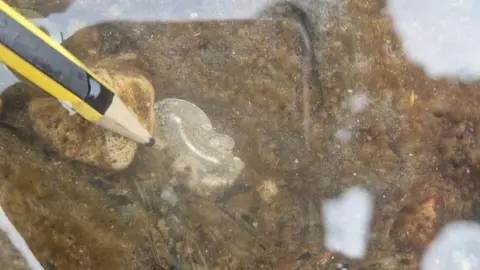Industrial waste turning into rock 'in decades'
 University of Glasgow
University of GlasgowIndustrial waste is turning into rock in "decades", much faster than the millions of years it is thought to take for it to form naturally, according to research carried out along the Cumbrian coast.
An aluminium drinks can tab, which was designed post 1989, and a 1934 coin featuring George V were among items found embedded in rock at Derwent Howe.
Researchers at the University of Glasgow documented a new "rapid anthropoclastic rock cycle", which mimics natural cycles but involves human material over accelerated timescales.
They warn the development of rock around industrial waste sites could have negative impacts on ecosystems as well as land planning.
Their findings came from analysis of a two-kilometre (1.25-mile) stretch of slag deposit, which was home to iron and steel-making foundries during the 19th and 20th centuries.
The deposits have formed cliffs of waste material which are being eroded by coastal waves and tides, and the team carried out analysis after noticing irregular formations in the cliffs.
 University of Glasgow
University of GlasgowDr Amanda Owen, one of the study's authors, said: "For a couple of hundred years, we've understood the rock cycle as a natural process that takes thousands to millions of years.
"What's remarkable here is that we've found these human-made materials being incorporated into natural systems and becoming lithified - essentially turning into rock - over the course of decades instead.
"It challenges our understanding of how a rock is formed, and suggests that the waste material we've produced in creating the modern world is going to have an irreversible impact on our future."
 University of Glasgow
University of GlasgowLaboratory tests helped researchers determine that Derwent Howe's slag materials contain deposits of calcium, iron, magnesium and manganese.
These elements are highly chemically reactive, which is key to causing the accelerated process of rock formation.
When the slag is eroded by the sea, it exposes the material to seawater and air, which interacts with the slag's reactive elements to create natural cements including calcite, goethite, and brucite.
These cements are the same materials that bind together natural sedimentary rocks, but the chemical reactions cause the process to happen much faster than has been assumed to happen with similar material in a natural rock cycle.
 University of Glasgow
University of GlasgowCo-author Dr John MacDonald said the aluminium can tab which was found embedded in the material had a design that researchers "realised couldn't have been manufactured before 1989".
"This gives us a maximum timeframe of 35 years for this rock formation, well within the course of a single human lifetime."
Dr David Brown, the paper's third co-author, said the "rapid appearance of rock could fundamentally affect the ecosystems above and below the water, as well as change the way that coastlines respond to the challenges of rising sea levels and more extreme weather as our planet warms".
He added: "Currently, none of this is accounted for in our models of erosion of land management, which are key to helping us try to adapt to climate change."
The research is published in the journal Geology.
In the paper, the team note that a similar process had been observed in northern Spain, but researchers there were unable to determine how long it had been under way.
